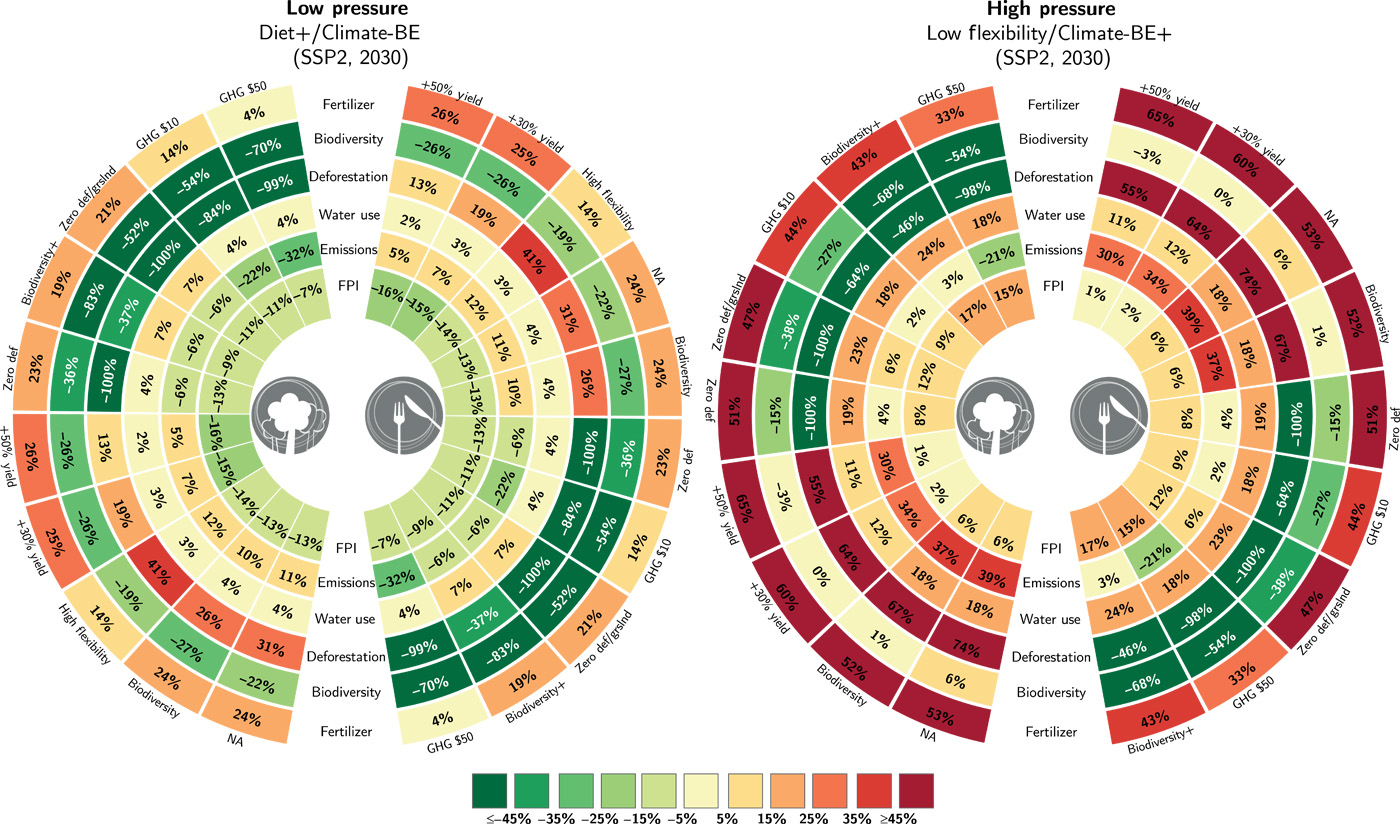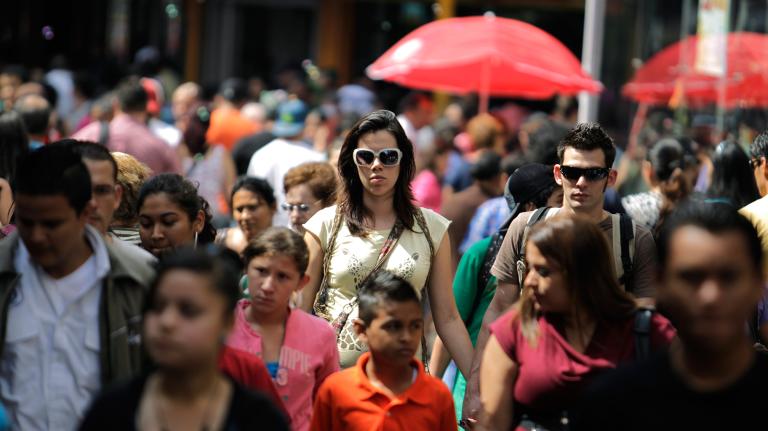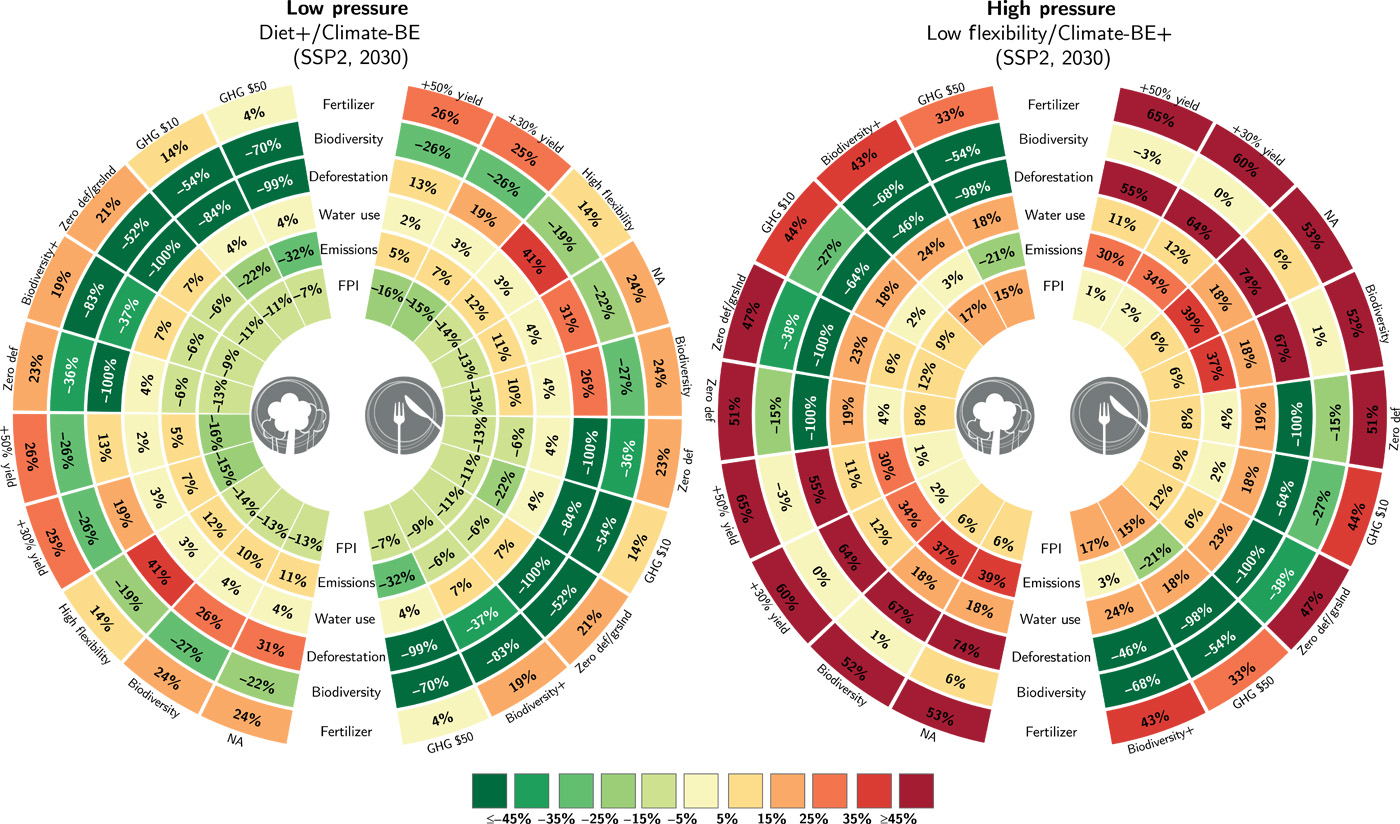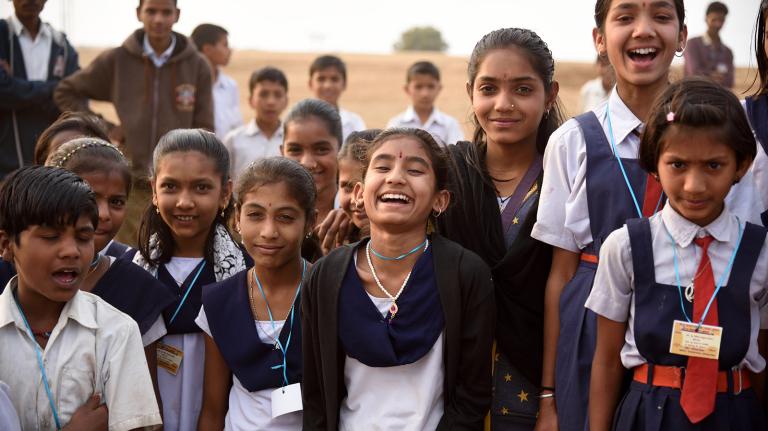Part of a series on tackling global poverty while protecting the environment. Read today’s main installment.
Take a look at this menu of worthy goals: halt the destruction of the world’s last wild places, stop greenhouse gas emissions, and eliminate hunger. Which comes first and which comes last?
In September, a group of researchers who published a paper in the journal Science Advances tried running different priorities through a global model. Here’s what they found: Minimizing the amount of land humans dominate is the way to go.
The researchers compared two scenarios that create very different demands for land. In the first scenario we cut back on our meat consumption and allow some nuclear energy — which means devoting less forest and farmland to bioenergy (stuff you grow then turn into fuel for a power plant). This reduces competition for land, so it’s possible to stem deforestation and emissions without sending food prices through the roof.
In the second scenario, our meat-heavy western diet continues to spread around the world, we do nothing to help poor farmers improve their yield, and — by phasing out nuclear energy — we end up relying more on bioenergy to meet our carbon goals.
You can see how this works if you check out this graph from the paper. Admittedly, it’s totally incomprehensible unless you enlarge and look closely. But after I spent some time studying it, I thought it was cool enough to share.
Basically, red is bad here, and green is good. The circle on the left is the first scenario (some nukes, less meat), while the circle on the right is the second scenario (no nukes, no dietary change). Around the outer circumference are a bunch of possible policy options to pursue within those scenarios. So, if you push for increasing farm yields 50 percent, then food prices stay low, but fertilizer use soars. If you institute a carbon price of $50, then you control emissions but drive up the price of food. If you prioritize protecting biodiversity, there are different tradeoffs than if you prioritize a “zero deforestation” policy. No matter what, things are a lot tougher in the second scenario where we dominate more land.

That’s the biggest takeaway from the study: The less land we use to support ourselves, the more flexibility we have to tackle poverty and climate change at the same time.
For more detail and precision, read the paper here.




